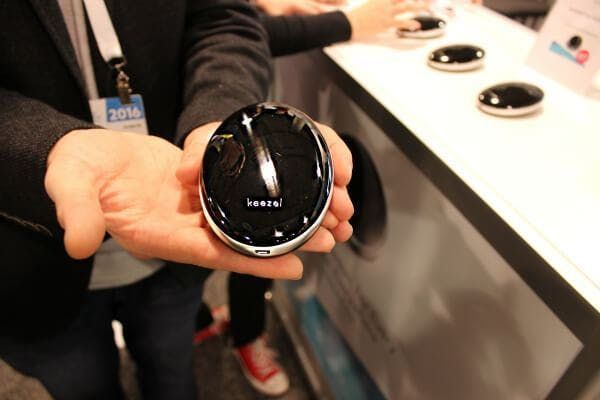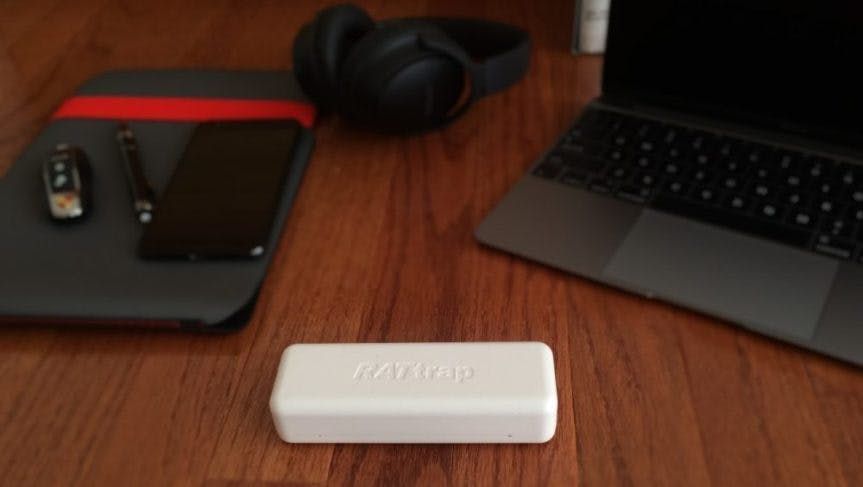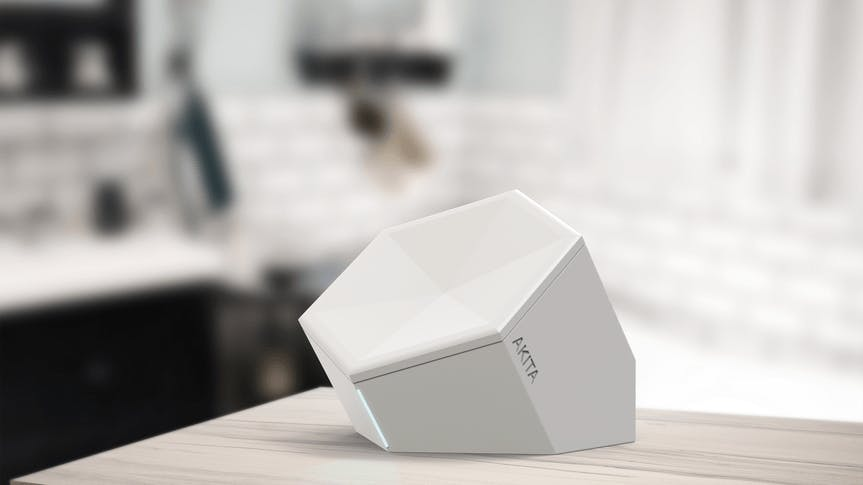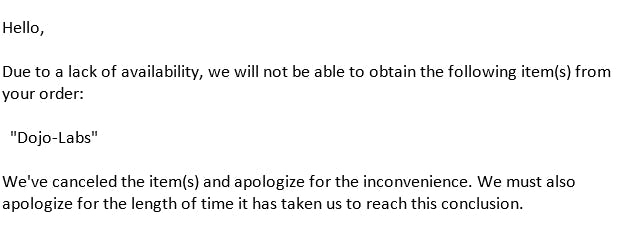
At CES 2016, we were able to view two products birthed from crowdfunding campaigns and promising to protect your connected devices. Since then, we’ve seen more devices added to the list of those fighting for the same piece of the pie including Cujo, Keezel, Dojo, RATtrap, AKITA, and Bitdefender Box 2.
On the surface, most internet security devices are the same. Almost all of them offer to protect you from hacks, phishing scams, viruses, malware, and other cyber threats. But here’s a fact: Every internet security device offers a different level of protection.
RELATED: BEST SELF-MONITORED SECURITY SYSTEMS
Cujo is a device that plugs into your router using an Ethernet cable. It then monitors all the data that comes in and out of your home’s network. By doing this, it can easily stop cyber threats from entering your devices through your network and prevent sensitive data from leaving your home.
Dojo is quite similar to Cujo. It connects to your router using an Ethernet cable, and it also needs to be plugged into an outlet. It sits at your network’s gateway, just like Cujo. However, it treats your personal data differently. It gathers metadata instead of actual data.
Keezel is a wireless device, slightly larger than a computer mouse. To use Keezel, you connect it to your home’s Wi-Fi or a public hotspot and it becomes your personal Wi-Fi router. Simply connect it to the devices you want to protect, and it protects the devices using VPN technology.
RATtrap is designed to sit between your modem and your router. Like Cujo and Dojo, it monitors traffic and stops potential threats. It also blocks malware-infested websites as well as sites that attempt to steal credentials and probe for weaknesses in your home network.
AKITA is designed to plug into one of your router’s LAN ports via the included Ethernet cable. As it’s not sitting between the modem and router, it can’t monitor all network traffic. It only sniffs Wi-Fi-connected devices for questionable or malicious packets of data. That said, it doesn’t work on wired devices (e.g., LAN-connected PC) as of yet.
Bitdefender BOX 2 can be set up using your existing router or you can use BOX 2 as a Wi-Fi router itself. Regardless of the method you choose, it protects all connected devices.
Level of Protection
All six devices can protect you from cyber threats, but they have their own ways of doing so.
Cujo

Cujo provides a firewall combined with antivirus and anti-malware protection, protecting you from phishing, scammers, and hackers. When placed at your network’s gateway (the router), Cujo can monitor everything that comes in and out of your home network. It prevents you from accessing sites that it thinks are not trustworthy based on your rules. It also prevents your devices from sending out information that should be private. Rules can be configured using the Cujo App. All data that enters your network is scanned for viruses and malware, and detected threats are automatically eliminated. Cujo’s database is frequently updated to keep up with ever-changing cyber threats.
Cujo also has a super-secret smart weapon: If a Cujo encounters a new cyber threat, it sends information about that threat to a secure server. All the other Cujos are then updated with the information, so they know what the threat is and how to stop it.
Apart from internet security, Cujo can help parents protect their kids from the dangers of the internet. With the parental control features , users can now manage what websites their kids can visit, set a limit on daily use, or block questionable content.
Dojo

Like Cujo, Dojo also connects to your router, but it takes a different approach. The device continuously analyzes your network traffic and how connected devices behave. It uses that information to prevent cyber threats from affecting your network or any of your devices. It even takes your privacy a step further by analyzing metadata instead of the actual data.
Metadata is data about data. It may sound confusing, but it’s not. Take images as an example. The information about an image — its size, resolution, when it was taken, which device was used to take the image — is information classified as metadata. By looking at a file’s metadata, Dojo knows what kind of information is being sent or received. Is it an image? Video? File? HTML? Dojo uses this knowledge and looks out for questionable activity. When your network or one of your devices is up to something shady, it notifies you and asks you how to respond. Should Dojo allow it, block it once, or block all similar activities? You decide.
Let’s put Dojo into action. Your new security camera tries sending videos to the cloud. Since that’s a first, and since Dojo considers videos to be sensitive data, it asks you whether or not it should allow this to happen. You wanted this to happen, so you say okay. But one day, your security camera tries sending images to a foreign IP address. That sounds suspicious, so Dojo asks you again. This time, blocking the action seems to be the right choice. Don’t worry about getting one alert after another; Dojo learns over time how to handle your devices by itself.
Keezel
Keezel is different from the other options as it’s portable and wireless. It connects to any Wi-Fi router, whether that is your home Wi-Fi or Wi-Fi at your favorite coffee shop. Once connected, Keezel becomes a Wi-Fi repeater, bouncing the Wi-Fi signal towards your devices while also protecting connected devices.
It uses VPN technology to protect your devices from threats. A VPN (Virtual Private Network) is a private internet connection that you can use when connecting to a private or public network. Instead of connecting directly to servers, your data will pass through a secure “tunnel” that connects you to a gateway. “Tunnels” are encrypted, and most of the time invisible from threats. The gateway, which has a different IP address, connects to servers.
Keezel’s VPN technology offers privacy so others can't see what you’re up to online, web censorship bypass to access content not available in your country, and protection from identity theft and online scams. It also protects its users from potential cyber-criminals lurking around public hotspots.
RATtrap

RATtrap is similar to Cujo and Dojo. In fact, it combines Cujo and Dojo’s approach into a single solution. To protect you, RATtrap needs a physical connection to your modem and your router via Ethernet. Simply unplug the Ethernet cable connected to the router, plug the loose end into RATtrap, and use the included Ethernet cable to connect RATtrap to your modem.
One way RATtrap protects you is by tracking all malicious and potentially harmful websites. If the sites try to send you traffic or vice versa, RATtrap will block the process.
RATtrap also uses Cujo’s approach in that it cross-references incoming and outgoing traffic with a database of threats. Instead of analyzing the traffic data, however, it analyzes packet metadata, just like Dojo. And instead of analyzing packet metadata in the cloud, RATtrap analyzes it locally. The advantage of this approach is that the RATtrap cloud never sees your traffic or your traffic metadata which ensures complete privacy.
Finally, RATtrap has a network of “threat sensors.” These sensors look for and inform RATtrap’s cloud of new threats. The cloud processes received information, analyzes how to stop new threats, and pushes down the info to each RATtrap device via a threat intelligence update.
AKITA

AKITA is kind of like a bomb-sniffing-dog. When you plug it into your router’s LAN port, it roams free throughout your network, sniffing data packets sent from your Wi-Fi-connected devices. The good thing about this method is that it doesn’t have to unbox each data packet. It sniffs the packet, and if it’s threat-free, it lets it go. If it detects a questionable packet, it will send it to the cloud for further analysis. The cloud uses threat intelligence, behavioral analysis, and machine learning to analyze data packets. If the analysis comes back positive for a threat, the cloud will send Akita commands on how to neutralize it. It includes a custom command that will temporarily disconnect the affected device from your network to stop it from spreading the threat to other devices.
What sets AKITA apart from other internet security devices is that they offer on-call expert help if you’re a paying customer. The on-call expert can help you with almost any question related to technology, network, and internet security. For example, after receiving a notification that one of your devices has been attacked by malware, you can call, and they will walk you through elimination and prevention.
While AKITA can only protect Wi-Fi devices for now, its creators are actively developing a solution that will enable AKITA to monitor hardwired devices as well. Once ready, they will activate the feature in all AKITA devices via a firmware update.
Bitdefender BOX 2
Bitdefender BOX 2 is the most versatile of the six options. You can use it with almost any home internet setup, whether you have a router-modem, a standalone router, or no router at all. Instead of simply standing guard at your network’s gateway, BOX 2 creates its own virtual Wi-Fi router. Everything connected to BOX 2’s virtual router is protected. Because of this setup, take note that using BOX 2 might affect your internet speeds. However, Bitdefender reassures that the slowdowns are minimal so long as you’re using less than a 1GBPS internet connection.
BOX 2 uses multiple layers of protection to detect and prevent malware, viruses, and brute force attacks. For example, for smart home devices, BOX 2 uses behavioral analysis and machine learning to detect possible attacks. Using its wide database of known threats, BOX 2 automatically eliminates detected threats.
Also, the required subscription service includes access to regularly-updated antivirus that you can install onto an unlimited number of smartphones (iOS & Android) and computers (Mac & Windows).
Which One Is For You?
If you’re looking for an internet security device to protect your home network, we recommend RATtrap, Bitdefender BOX 2, Cujo, Dojo, and AKITA in that order. RATtrap is recommended because of its track record and ability to analyze packet metadata locally. Bitdefender BOX 2 because of the company’s reputation and included antivirus for computers and mobile devices. we recommend Cujo for its ability to push updates to all Cujo devices, leaving no user behind. Dojo ranks low because of their treatment of crowdfunding backers. More on that later. Finally, AKITA is last because it’s new. In fact, only some of their crowdfunding backers have received the product. It's the only option that you can't buy yet now.
What about Keezel? While you can use it at home, it’s best for frequent users of public hotspots. If you’re a traveler or simply someone who uses public hotspots a lot, we recommend getting a Keezel plus another internet security device for your home.
The Real Cost Of Internet Security
Just like your home’s security, internet security is an investment. That said, you should also consider the long-term cost of using these internet security devices.
Cujo
Cujo used to require that you pay a subscription to enjoy service. Users could choose between a monthly fee of $8.99 per month (or $59 per year) or a one-time payment of $150 for a lifetime subscription.
However, recently, they’ve changed their pricing strategy. They’ve scraped the monthly and annual payment options and require all new users to pay the $150 one-time service fee. Buying a Cujo device will cost you $249 ($99.00 device cost + the $150 lifetime service fee). The good news here is that since there are no more monthly fees, the long-term cost of using Cujo is low.
Dojo
Dojo requires a subscription for you to enjoy its full potential. You can use Dojo even if you don’t subscribe, but updates and reporting will be limited. It would be like using obsolete antivirus.
Dojo sells for $199, which includes the first year of service for free. After the first year, continued service will cost $99/year or $9.99 per month.
The fact that Dojo is selling is shocking. They started pre-selling back in 2015 and we pre-ordered one January of 2016. Eight months later, without warning, despite multiple requests for an update, they cancelled our order without explanation and then went AWOL. As a side note, we had originally paid $99 for the device which also included 12 months of service.
Keezel
Keezel offers two subscription plans: Basic (free) and Premium ($5/month). Basic service allows you to enjoy high-level internet security, the option to choose from a limited number of IP gateway locations (get an IP address from another country), and the ability to download from the soon-to-be-released app gallery for Keezel. A Premium subscription will give you the same level of internet security, boost your internet speed, let you choose any IP gateway location, give you access to the app gallery, ad-blocking, anti-phishing filter, and let you connect two Keezels even if they’re in different locations.
Keezel subscriptions can be purchased at point of sale. The first purchase option is Keezel Basic for $179, which is the base price of the device. Second, you can get a Keezel and a one-year subscription for $229. Finally, a device and a two-year subscription is $289. After the subscription expires, you can go month-to-month for $5/month. If you’re planning on using Keezel long-term, you can also get a lifetime subscription plus the device for $499.
RATtrap
RATtrap sells for $199, which includes a subscription. The first 12 months are free, but after that, you can choose to continue your subscription for $9/month or unsubscribe. Without a subscription, RATtrap loses all of its protective features.
AKITA
As AKITA is still crowdfunding, some details about usage costs remain unclear. The estimated subscription cost is between $15 and $25 monthly, which is expensive compared to other solutions. However, the good news is that a subscription is optional. The only advantage of adding a subscription is the on-call help feature.
The device itself is expected to retail for $139, but you can now pre-order it on IndieGoGo for $99.
Bitdefender BOX 2
Bitdefender BOX 2 retails for $179.99, but that price includes a one-year subscription to Bitdefender’s internet security services. The service lets you use BOX 2 for internet security at home and the Bitdefender software as an antivirus. After the first year, renewing the service will cost you $99 per year.
Summary
Although BOX 2’s hardware is the most expensive of the six, it offers the biggest bang for your buck. The subscription service is only $99 per year, considerably less expensive than Dojo, RATtrap, and AKITA’s subscription services while offering more features. Cujo and Keezel both cost less than BOX 2, but Keezel is best for mobile use, and Cujo doesn’t offer as many features as BOX 2.
AKITA is the cheapest hardware-wise, and it doesn’t require a subscription to work.
Keezel vs. Cujo vs. Dojo vs. RATtrap vs. AKITA vs. Bitdefender BOX 2
| Cujo | Keezel | Dojo | RATtrap | AKITA | Bitdefender BOX 2 | |
|---|---|---|---|---|---|---|
| Best For | Protecting your home network, including smart home devices | Protecting your mobile devices when they’re connected to public networks. | Protecting your smart home devices. | Protecting your home network, including smart home devices. | Protecting Wi-Fi devices connected to your home network, including smart home devices. | Protecting your home network, including smart home devices. |
| How It Protects You | Smart Firewall, Anti-Virus, Anti-Malware | VPN | Analyzes Metadata | Tracks Malicious Websites and Analyzes Packet Metadata | Packet Data Sniffing | Analyzes Packet Data, Behavioral Analysis, Brute Force Attack Protection |
| Works with Wi-Fi Devices | ||||||
| Ethernet | ||||||
| Monthly or Yearly Service Fee | NA | $5/month | NA | $9/month | $15-$25/month (Optional) | $14.99/month |
| Optional Lifetime Service Fee | Included | Buy the device for $330 and enjoy lifelong Premium services | $155.27 | |||
| Can you use the system without paying for a subscription? | Yes | Yes, but with fewer VPN locations and lower internet speeds. | Yes, but you will receive limited updates, limited reporting, and no support. | No, you cannot. | Yes | No, you cannot. |
| Where to Buy | Buy Here | Buy Here | Buy Here | Buy Here | Buy Here | Buy Here |
SMART HOME PROTECTION SUMMARY
Cujo has a suspicious track record regarding online reviews. Their original Amazon page had a 3.5 star rating with almost 200 reviews. Then, without reason, they abandoned the page and started a new Amazon page. Their new page quickly boasted hundreds of positive reviews. It currently sits at 4.5 stars, but it’s rated F by Fakespot for review quality. Fakespot estimates that 79.5% of Cujo’s reviews are low quality. That said, it’s hard to trust what’s been said. Looking at their original Amazon page, reviews for the device are mostly positive, but product users have pointed out flaws. For one, using Cujo slows things down a bit as it’s like adding a third-party to a conversation. Second, it requires port forwarding, and one Amazon user claims that it steals the network IDs of your devices and that it’s less than simple to use. In his words,
“Since they realized ARP was a bad way to do this, they are now using DHCP. Sadly, this is nowhere near as simple. Gone is the magic “just put it on your kitchen table and it works like magic.” Instead, you have to figure out how to log into your router, make a network change (which your ISP will tell you is bad but who listens to them? I’m not being sarcastic here; they want you to use them for DNS/DHCP because they like using your web browsing for advertising metrics!) and then reboot everything a few times. Not the end of the world, but no longer simple enough for Grandma to use.”
There's also a report from a private cyber security firm that claims that Cujo has vulnerabilities that could allow attacks to bypass the safe browsing feature and take control of the device.1 This is concerning, especially because Cujo is supposed to be the one protecting you, and not exposing you to threats.
All that said, Cujo can help you protect your security cameras, security systems, smart thermostats, smart locks, and more. By analyzing the behavior of your devices, it knows when your camera is acting as a camera and when it’s not.
Keezel
Keezel is portable and wireless. That’s what sets it apart from the other devices, which stay connected to your router. Even though it’s portable, you can use it at home to protect your connected devices. The benefit is that it creates a secure tunnel between your smart home and the websites your smart devices access. Your connected devices are no different than tiny computers, and you would never connect your computer to the internet without protection, would you?
Also, you can connect two Keezels together to create a private network. With one at home and one with you, you can control your smart home devices from anywhere in the world without fear of being spied on.
Dojo
What sets Dojo apart is its ability to protect your smart home devices by learning how they usually behave and notifying you if they start behaving out of character. We would be lying if we said we weren’t slightly turned off by how they treated their original backers, including us. They completely abandoned communication and cancelled orders. While they have a good product, it does make one question how reliable they are as a company. What if they decide to give up again?
In digging into Dojo’s Amazon reviews, we found that users have mixed opinions. Some say that setting up Dojo can mess up the connection of certain smart home devices. They also say that it’s not so simple to setup. Like Cujo, it requires that you log into your router and turn off DHCP.

RATtrap
RATtrap, in our opinion, offers the best protection for smart home devices. One, it tracks malicious websites and prevents your devices from connecting to them. Two, it blocks websites that hack unprotected security cameras, such as Shodan.io. Three, it offers IP and DNS protection as well as DDoS attack protection to prevent hackers from attacking your home.
According to user reviews on Amazon, RATtrap is indeed as easy to set up as promised. There were a couple of reviews claiming that RATtrap slowed down their internet speeds. However, after reaching out to RATtrap’s support team and receiving a replacement unit, the problem subsided.
AKITA
AKITA’s performance remains to be seen, but it’s a good option for those who are concerned that their personal data is being opened and analyzed by internet security devices. AKITA’s ability to sniff questionable data without deep packet inspection is a plus.
Another advantage is that you can use it without a subscription, something others don’t offer. Unfortunately, if you do subscribe to their services, the long-term cost will be greater than other options.
Bitdefender BOX 2
Bitdefender BOX 2 is our number two pick, next to RATtrap. It offers extended protection for your computers and mobile devices in the form of antivirus. However, it doesn’t offer any stand out features when it comes to protecting your smart home devices. Still, Bitdefender is a trustworthy brand when it comes to internet protection.
Final Thoughts
Each of the six security solutions offers something unique, but some of them stand above the rest. Based on our research, RATtrap seems to be the best choice. Though they are now charging for their services, they offer a good value backed by good reviews. It’s also noteworthy that RATtrap works in bridge mode, it’s not directly addressable and hence it does not have an attack surface, making it a secure and smart firewall.
Bitdefender BOX 2 comes in second thanks to its included antivirus, which allows it to protect your devices whether you’re at home or away.
Cujo started out as a strong contender, but its vulnerabilities make it a questionable option. Each Cujo comes with a lifetime subscription, so there’s no monthly fee to worry about.
Our rating on AKITA is TBD as it’s not yet on the market.
Finally, for on-the-go internet security, the obvious winner (and the only contender) is Keezel.

